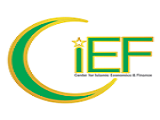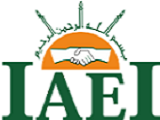Do The Socio-Economic Status, Religious Attitudeand Customer Perception Impact On Customer Behavior? : Islamic Banking Case
Abstract
This study aims to investigate customer behavior at Islamic banks,Indonesia. This research was analyzed by using path analysis approach involving 200 respondents as customers at several Islamic banks in Medan, Indonesia. Based on this research show the socio-economic status and religious attitudes have positively and significantly impactto customer behavior. On the other hand, socio-economic status and religious attitude are also positively and significantly impact for customer perceptions. Customer perceptions have the implication to increase positive customer behavior, sharia banking managers in Indonesia need to foster the religiosity of customers and target prospective customers who have good religiosity and good socio-economic status.
Keywords
Full Text:
PDFReferences
Abd. Majid, M. S., & H. Kassim, S. (2015). Assessing the contribution of Islamic finance to economic growth: Empirical evidence from Malaysia. Journal of Islamic Accounting and Business Research, 6(2), 292–310. https://doi.org/10.1108/JIABR-07-2012-0050
Abdul-Majid, M., Falahaty, M., & Jusoh, M. (2017). Performance of Islamic and conventional banks: A meta-frontier approach. Research in International Business and Finance, 42, 1327–1335. https://doi.org/10.1016/j.ribaf.2017.07.069
Abduh, M., & Azmi Omar, M. (2012). Islamic banking and economic growth: the Indonesian experience. International Journal of Islamic and Middle Eastern Finance and Management, 5(1), 35–47. https://doi.org/10.1108/17538391211216811
Adler, N.E., Boyce, T., Chesney, M.A., Cohen, S., Folkman, S., Kahn, R.L. and Syme, S.L. (1994), “Socioeconomic status and health: the challenge of the gradient”, American Psychologist, Vol. 49 No. 1, pp. 15-24.
Alam, S.S. and Sayuti, N.M. (2011), “Applying the theory of planned behavior (TPB) in halal food purchasing”, International Journal of Commerce and Management, Vol. 21 No. 1, pp. 8-20, doi: 10.1108/10569211111111676.
Alam, S.S., Jano, Z., Che Wel, C.A. and Ahsan, N. (2012), “Is religiosity an important factor in influencing the intention to undertake Islamic home financing in Klang valley?”, World Applied Sciences Journal, Vol. 19 No. 7, pp. 1030-1041, doi: 10.5829/idosi.wasj.2012.19.07.392.
Albaity, M., & Rahman, M. (2019). The intention to use Islamic banking: an exploratory study to measure Islamic financial literacy. International Journal of Emerging Markets, 14(5), 988–1012. https://doi.org/10.1108/IJOEM-05-2018-0218
Ali, M.M., Devi, A., Furqani, H. and Hamzah, H. (2020), "Islamic financial inclusion determinants in Indonesia: an ANP approach", International Journal of Islamic and Middle Eastern Finance and Management, Vol. 13 No. 4, pp. 727-747. https://doi.org/10.1108/IMEFM-01-2019-0007
Allen, R.L. and Hatchett, S. (1986), “The media and social reality effects: self and system orientations of black”, Communication Research, Vol. 13 No. 1, pp. 97-123.
Alshater, M.M., Hassan, M.K., Khan, A. and Saba, I. (2021), "Influential and intellectual structure of Islamic finance: a bibliometric review", International Journal of Islamic and Middle Eastern Finance and Management, Vol. 14 No. 2, pp. 339-365
Alqahtani, F., Mayes, D. G., & Brown, K. (2017). Islamic bank efficiency compared to conventional banks during the global crisis in the GCC region. Journal of International Financial Markets, Institutions and Money, 51, 58–74. https://doi.org/10.1016/j.intfin.2017.08.010
Amin, H., Rahim Abdul Rahman, A., Laison Sondoh, S., & Magdalene Chooi Hwa, A. (2011). Determinants of customers’ intention to use Islamic personal financing: The case of Malaysian Islamic banks. Journal of Islamic Accounting and Business Research, 2(1), 22–42. https://doi.org/10.1108/17590811111129490
Bananuka, J., Kaawaase, T. K., Kasera, M., & Nalukenge, I. (2019). Determinants of the intention to adopt Islamic banking in a non-Islamic developing country: The case of Uganda. ISRA International Journal of Islamic Finance, 11(2), 166–186. https://doi.org/10.1108/IJIF-04-2018-0040
Bananuka, J., Kasera, M., Najjemba, G. M., Musimenta, D., Ssekiziyivu, B., & Kimuli, S. N. L. (2019). Attitude: mediator of subjective norm, religiosity and intention to adopt Islamic banking. Journal of Islamic Marketing, 11(1), 81–96. https://doi.org/10.1108/JIMA-02-2018-0025
Bohlen, G.M., Diamantopoulos, A. and Schlegelmilch, B.B. (1993), "Consumer Perceptions of the Environmental Impact of an Industrial Service", Marketing Intelligence & Planning, Vol. 11 No. 1, pp. 37-48. https://doi.org/10.1108/02634509310024155
Boukhatem, J., & Ben Moussa, F. (2018). The effect of Islamic banks on GDP growth: Some evidence from selected MENA countries. Borsa Istanbul Review, 18(3), 231–247. https://doi.org/10.1016/j.bir.2017.11.004
Charag, A. H., Fazili, A. I., & Bashir, I. (2019). Determinants of consumer’s readiness to adopt Islamic banking in Kashmir. Journal of Islamic Marketing. https://doi.org/10.1108/JIMA-10-2018-0182
Durmaz, Y and Durmaz, Y.N. (2014). The Impact of Social Factor on Consumer Buying Behaviour and An Empirical Aplication in Turkey. Journal of Social Science Research, Vol.3, No.2
Furqani, H., & Mulyany, R. (2009). Islamic banking and economic growth: Empirical evidence from Malaysia. Journal of Economic Cooperation and Development, 30(2), 59–74.
Grassa, R., & Gazdar, K. (2014). Financial development and economic growth in GCC countries: A comparative study between Islamic and conventional finance. International Journal of Social Economics, 41(6), 493–514. https://doi.org/10.1108/IJSE-12-2012-0232
Habriyanto., Trianto, B., Nik Azman, N.H., Busriadi., Muchtar, E.H., and Barus, E.E. (2022). Does The Component of Islamic Financial Literacy Affect on MSMEs Decision in Islamic Banking Financing : Creative Economy Investigate. Internationla Journal of Islamic Business and Economics, Vol.6, No.2. https://doi.org/10.28918/ijibec.v6i2.6090
Hargittai, E. (2008), “ Whose space? Differences among users and non-users of social networks sits”, Journal of Computer-Mediated Communication, Vol.13No.1, pp. 276-297.
Hsu, M.-H., Tien, S.-W., Lin, H.-C. and Chang, C.-M. (2015), "Understanding the roles of cultural differences and socio-economic status in social media continuance intention", Information Technology & People, Vol. 28 No. 1, pp. 224-241.
Ibrahim, M. H. (2015). Issues in Islamic banking and finance: Islamic banks, Shari’ah-compliant investment and sukuk. Pacific Basin Finance Journal, 34, 185–191. https://doi.org/10.1016/j.pacfin.2015.06.002
Ibrahim, M. H., & Rizvi, S. A. R. (2018). Bank lending, deposits and risk-taking in times of crisis: A panel analysis of Islamic and conventional banks. Emerging Markets Review, 35, 31–47. https://doi.org/10.1016/j.ememar.2017.12.003
Imam, P., & Kpodar, K. (2016). Islamic banking: Good for growth? Economic Modelling, 59, 387–401. https://doi.org/10.1016/j.econmod.2016.08.004
Kassim, S. (2016). Islamic finance and economic growth: The Malaysian experience. Global Finance Journal, 30, 66–76. https://doi.org/10.1016/j.gfj.2015.11.007
Kasri, R.A. and Chaerunnisa, S.R. (2022), "The role of knowledge, trust, and religiosity in explaining the online cash waqf amongst Muslim millennials", Journal of Islamic Marketing, Vol. 13 No. 6, pp. 1334-1350.
Kaakeh, A., Hassan, M. K., & van Hemmen Almazor, S. F. (2018). Attitude of Muslim minority in Spain towards Islamic finance. International Journal of Islamic and Middle Eastern Finance and Management, 11(2), 213–230. https://doi.org/10.1108/IMEFM-11-2017-0306
Kaakeh, A., Hassan, M. K., & Van Hemmen Almazor, S. F. (2019). Factors affecting customers’ attitude towards Islamic banking in UAE. International Journal of Emerging Markets, 14(4), 668–688. https://doi.org/10.1108/IJOEM-11-2017-0502
Koç, B. and Ceylan, M. (2012), "The effects of social‐economic status of consumers on purchasing, behaving and attitude to food products: Case study of Van, Turkey", British Food Journal, Vol. 114 No. 5, pp. 728-742. https://doi.org/10.1108/00070701211230006
Lebdaoui, H., & Wild, J. (2016). Islamic banking presence and economic growth in Southeast Asia. International Journal of Islamic and Middle Eastern Finance and Management, 9(4), 551–569. https://doi.org/10.1108/IMEFM-03-2015-0037
Lenhart, A., Purcell K., Smith A., and Zickuhr, K. (2010), “Social media and mobile internet use among teens and young adults”, Pew Internet & American Life Project, An initiative of the Pew Research Center, Washington, D.C., 3rd February
Mahdzan, N. S., Zainudin, R., & Au, S. F. (2017). The adoption of Islamic banking services in Malaysia. Journal of Islamic Marketing, 8(3), 496–512. https://doi.org/10.1108/JIMA-08-2015-0064
Mcdaniel, S.W. and Burnett, J.J. (1990), “Consumer religiosity and retail store evaluative criteria”, Journal of the Academy of Marketing Science, Vol. 18 No. 2, pp. 101-112.
Mohd. Yusof, R., & Bahlous, M. (2013). Islamic banking and economic growth in GCC & East Asia countries: A panel cointegration analysis. Journal of Islamic Accounting and Business Research, 4(2), 151–172. https://doi.org/10.1108/JIABR-07-2012-0044
Naqvi, B., Rizvi, S. K. A., Uqaili, H. A., & Chaudhry, S. M. (2018). What enables Islamic banks to contribute in global financial reintermediation? Pacific Basin Finance Journal, 52, 5–25. https://doi.org/10.1016/j.pacfin.2017.12.001
Narayan, P. K., & Phan, D. H. B. (2019). A survey of Islamic banking and finance literature: Issues, challenges and future directions. Pacific Basin Finance Journal, 53, 484–496. https://doi.org/10.1016/j.pacfin.2017.06.006
Rizvi, S. A.R., Narayan, P.K., Sakti, A., &Syarifuddin,, F. (2019). Role of Islamic Bank in Indonesian Banking Industry: an empirical exploration, Pacific-Basic Financial Journal. Vol 62. 101117.
Trianto, B., Barus, E,E. and Sabiu, T.T. (2021). Relationship Between Islamic Financial Literacy, Islamic Financial Inclusion and Business Performance : Evidence from Culinary Cluster of Creative Economy. IKONOMIKA: Jurnal Ekonomi dan Bisnis Islam, Vol.6, No.1. https://doi.org/10.24042/febi.v6i1.7946
Trianto, B., Rahmayati, R., Yuliaty, T., &Sabiu, T. T. (2021). Determinant factor of Islamic financial inclusiveness at MSMEs: Evidence from Pekanbaru, Indonesia. Jurnal Ekonomi &Keuangan Islam, 7(2), 105–122. https://doi.org/10.20885/jeki.vol7.iss2.art1
Utomo, S.B., Sekaryuni, R., Widarjono, A., Tohirin, A. and Sudarsono, H. (2021), "Promoting Islamic financial ecosystem to improve halal industry performance in Indonesia: a demand and supply analysis", Journal of Islamic Marketing, Vol. 12 No. 5, pp. 992-1011.
Yanikkaya, H., Gümüş, N., & Pabuçcu, Y. U. (2018). How profitability differs between conventional and Islamic banks: A dynamic panel data approach. Pacific Basin Finance Journal, 48(July 2017), 99–111. https://doi.org/10.1016/j.pacfin.2018.01.006
DOI: http://dx.doi.org/10.24042/febi.v7i2.15827
Refbacks
- There are currently no refbacks.
Copyright (c) 2022
Ikonomika : Jurnal Ekonomi dan Bisnis Islam is a Journal of Islamic Economics and Business, Published by the Faculty of Islamic Economics and Business at UIN Raden Intan Lampung Indonesia. This work is licensed under a Creative Commons Attribution-ShareAlike 4.0 International License.






11.png)


